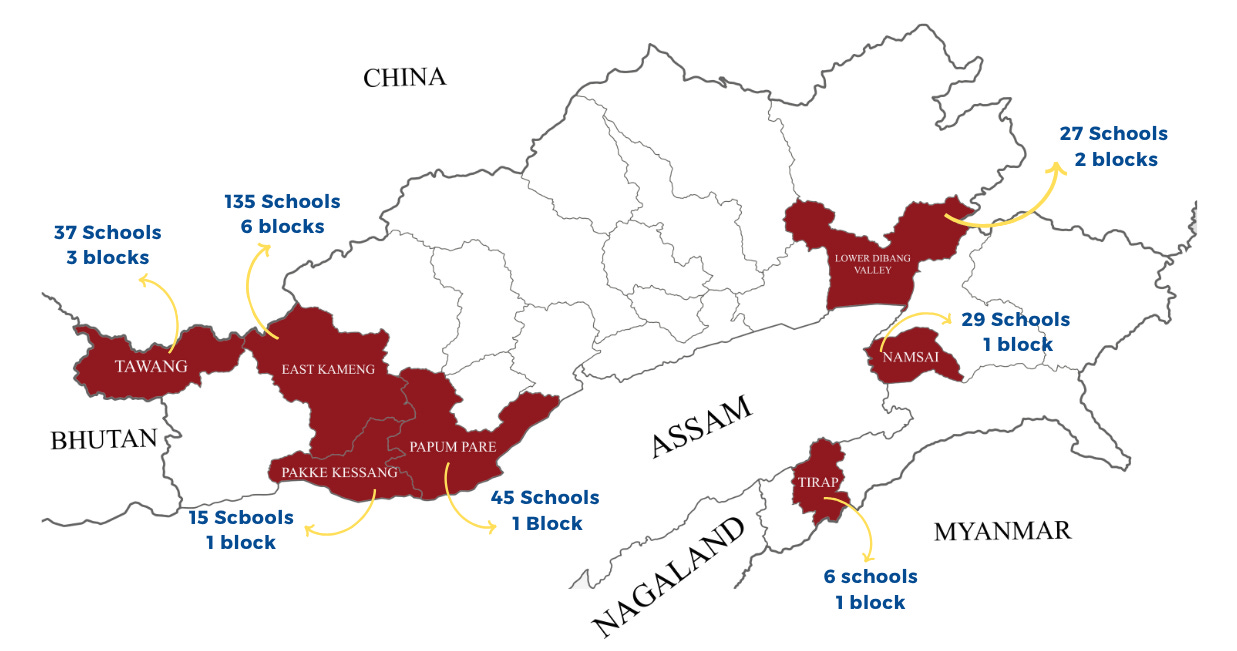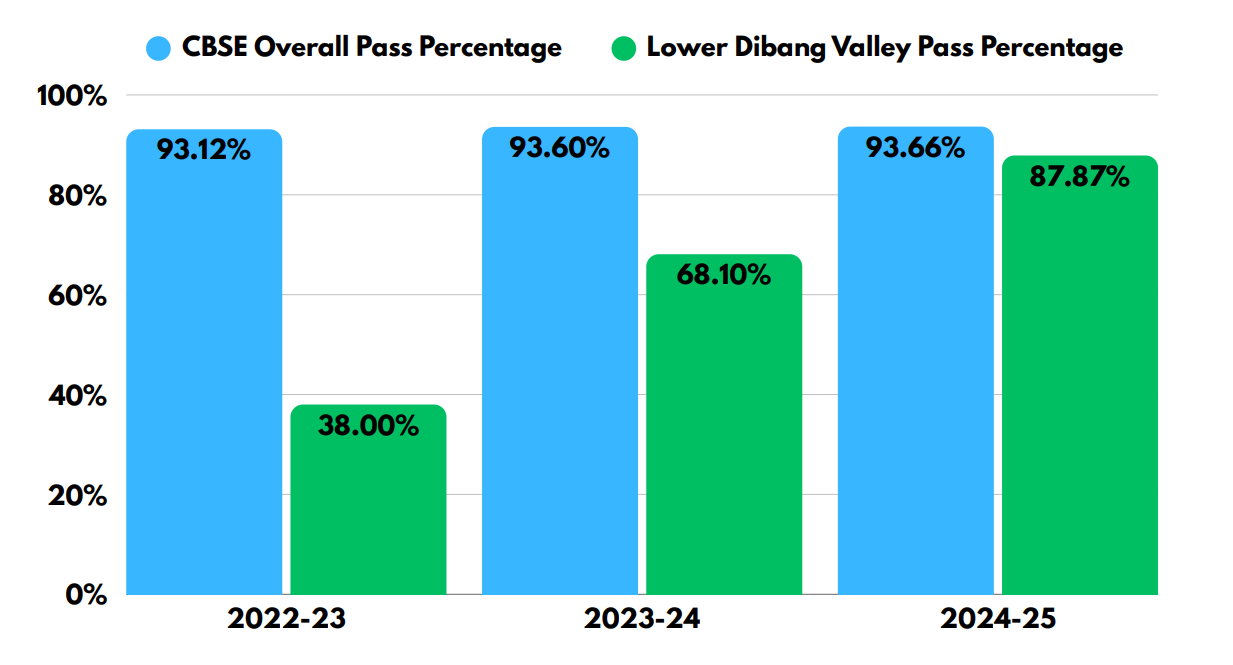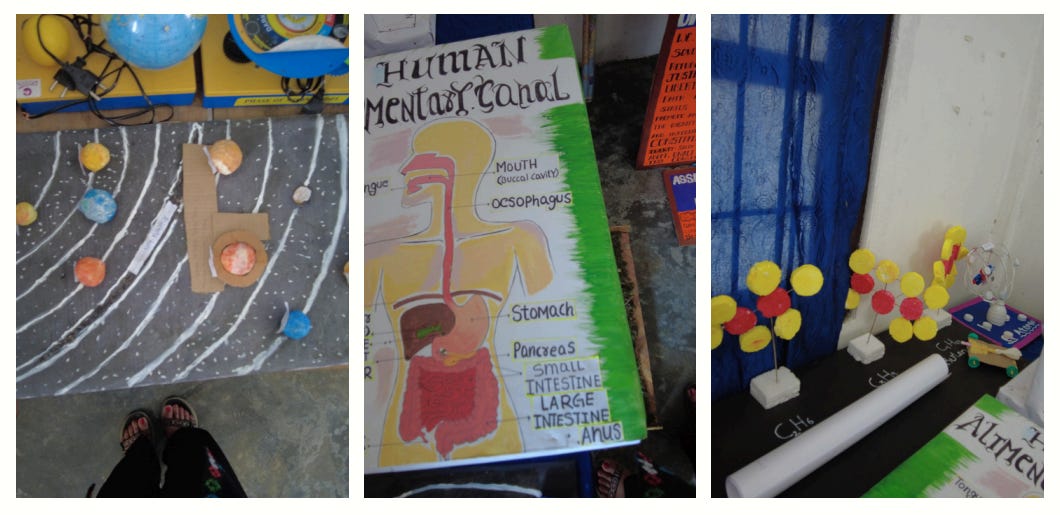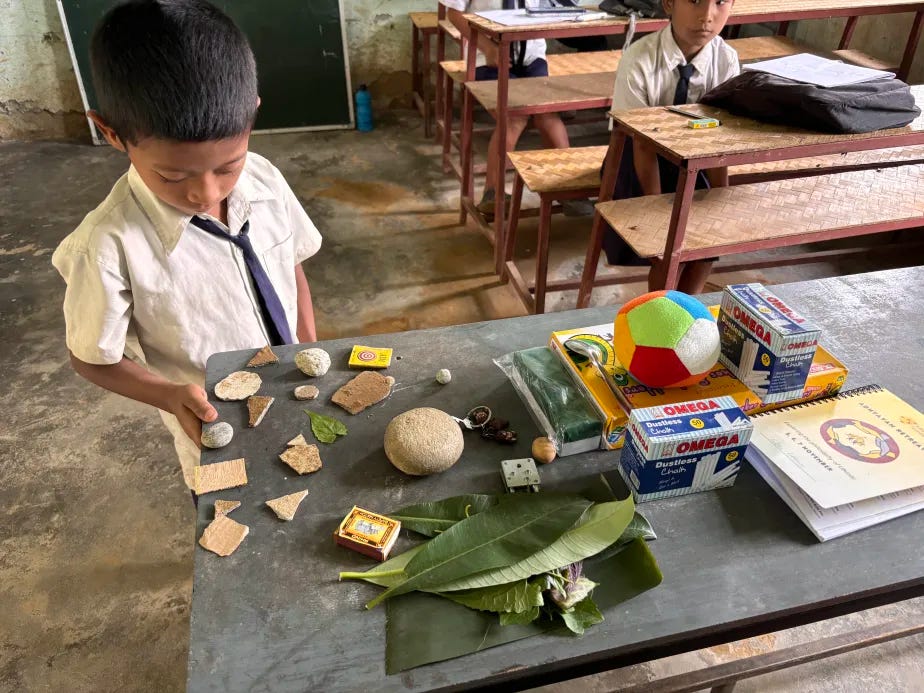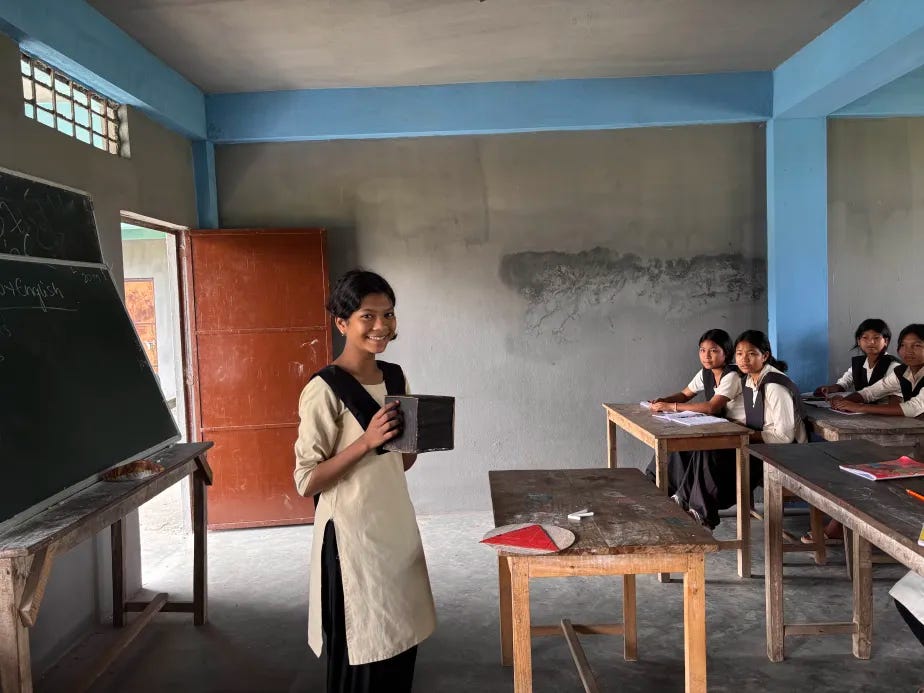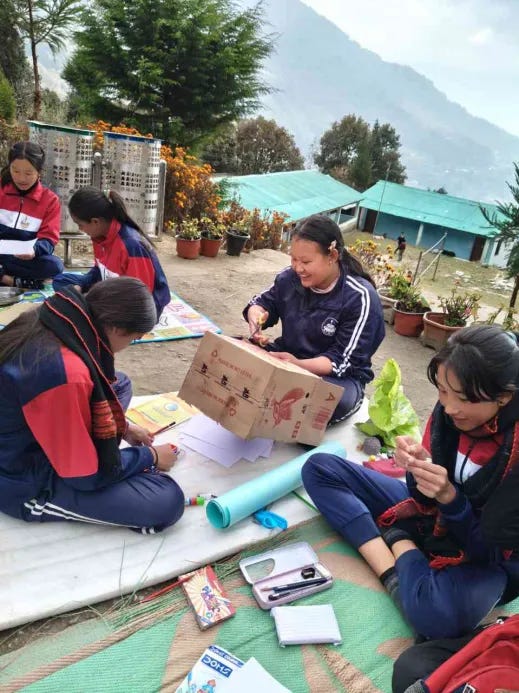In the far-flung, vibrant, and often overlooked corners of Arunachal Pradesh, Adhyayan’s work is grounded in a core belief: every child — no matter how remote their school or how complex their context — deserves an education that helps them thrive.
We work with the State Education Department of Arunchal Pradesh and Districts Administrations to build school leadership, strengthen teaching practices, and make learning more meaningful. Our approach in the districts that we work in has been shaped by the distinct realities of each region — sometimes focusing on foundational systems of school evaluation and collaboration, and at other times diving deep into specific needs like exam preparation or early-grade pedagogy.
In a state where access is a challenge and aspirations are immense, this work has shown us what genuine, context-sensitive education improvement can look like. Here are some highlights that we would like to share!
📈 From 38% to 88%: Students in Lower Dibang Valley Show Us What a Little Support Can Do
Two years ago, before we stepped in, the Class 10 pass percentage in Lower Dibang Valley was just 38%. Today, it stands at a remarkable 88% — the highest in all of Arunachal Pradesh.
What changed?
Not the students. Not the teachers. But the belief that they could do it, backed by a system that rallied behind them.
“I didn’t think we would see results this soon. These are the same students, the same teachers. A little push — and look where we are.”
— Saumya Saurabh, IAS, former Deputy Commissioner of Lower Dibang Valley
A network of teacher learning communities kept classrooms connected and resource-rich. The district administration led by example — from ensuring mid-day meals to mentoring students. Regular reviews and school visits brought in accountability, and mentorship and counselling visits helped students build confidence.
The Shifts That Enable Higher Class X Pass Percentages
In Lower Dibang Valley, East Kameng, and Namsai, the path to stronger Class X results has been built on deep shifts — in mindset, collaboration, systems, and support.
Professional Learning Communities (PLCs) played a quiet but powerful role. In schools where teachers once worked in isolation, WhatsApp groups and regular in-person PLC meetings became spaces to exchange doubts, strategies, and even difficult questions. In one school, for instance, a student scored 90 in English but only 40 in Math. Instead of dismissing it, teachers came together to ask why — and plan what they could do differently.
Slowly, teachers stopped saying “they won’t study” and started asking “how can I reach them?” That shift — from frustration to ownership — was perhaps the most transformative. At Government Secondary School Pakoti, East Kameng, which once expected only a 33% pass rate, teachers put in the hard, reflective work. The result? A 100% pass rate in class X at the school.
A key shift was helping teachers plan with clarity and purpose — especially to support students who were falling behind:
“Adhyayan supported subject teachers in breaking down the CBSE syllabus and creating a minimum syllabus focused on weaker students. By setting a clear deadline for syllabus completion, this effort led to a marked improvement in Class X CBSE board results.”
— Kalen Lego, CRCC Meka
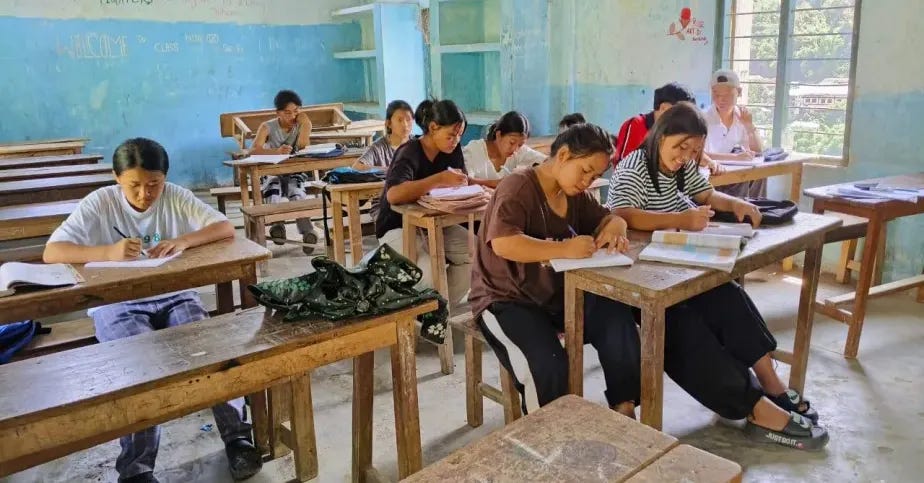
Why These Shifts Matter So Much
In remote districts, passing Class X is a gateway to opportunity. Students who pass can dream of skilled work, college, and lives beyond subsistence.
“If they fail, they lose the chance to get higher education and remain stuck where they are. But when they pass, they’re filling CUET forms in Itanagar and attending college in the cities. These results open real doors.”
— Satyajit Borgohain, Program Manager
Across India, Class X results are often a barometer for the health of an education system — not because of the marks themselves, but because they reflect how well our systems have supported learning over the years. A low pass percentage in Class IX or X is often not just about those two years — it reflects a longer learning journey where students may have missed key support along the way. Strengthening outcomes at this level means looking at the entire system holistically.
👩🔬 A Closer Look at a School Where Students Fall in Love with Learning: KGBV Dambuk, Lower Dibang Valley
Improvement in Class X results is just a part of the systemic school improvement we have been supporting in the districts we work in. In the heart of Arunachal’s orange orchards, KGBV Dambuk is changing the way its students learn. A vibrant Teaching-Learning Material (TLM) Room, filled with charts, models, and tools handcrafted by teachers and students, is a shining example of this shift. These materials make learning more visual, hands-on, and joyful.
“The training on TLM and lesson planning made a huge difference,” says school leader Mrs. Yarman Pertin, referring to Adhyayan’s support. “It empowered our teachers to innovate and adapt their methods — and the results are visible.”
Every lesson at KGBV Dambuk is planned with care, keeping learning outcomes at the center. This year, the school celebrated several district toppers in Classes 6 to 9 — young girls who are not just excelling in exams, but also growing in curiosity and confidence.
Vibrant learning environments and better outcomes are no accident — they’re the result of a collective vision where teachers are facilitators, students are active participants, and education is a joyful journey.
Here are some additional glimpses from schools that are enabling a love for learning for students in Arunachal!
The work in Arunachal is far from done — but it is proof that when we invest in children, listen to teachers, and work hand in hand with local leadership, big changes occur.

